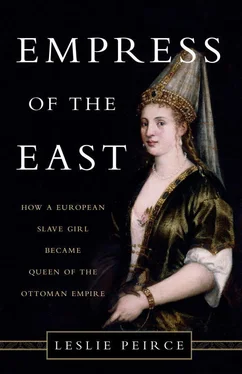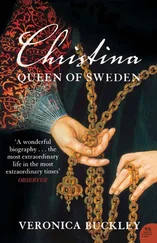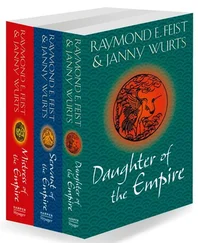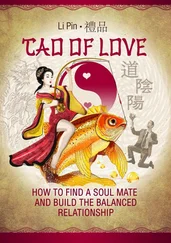A royal concubine had to be physically appealing, for the arousal of desire was critical. (At one point in the seventeenth century, the newly enthroned sultan’s aversion to females temporarily imperiled the survival of the Ottoman state.) But the concubine also had to possess a keen mind and a capacity for political intelligence in order to successfully promote her son in a dangerously competitive world. Daughters also needed astute mothers who could raise them to be princesses worthy of the dynasty and loyal allies of their brother. The Ottomans believed that all princes, except those who were physically or mentally disabled, were born with the right to succeed their father. Here they differed from their European rivals, who practiced primogeniture, assigning only the eldest the right to rule. In the Ottoman view, competition among princes identified the successor best able to govern, defend the empire, and conquer new lands.
The birth of her first child, Mehmed, in the fall of 1521 thrust Roxelana into this sometimes fierce world. The contest for the throne demanded that the sultan’s sons be prepared to compete to the death, and so princes were bred to the honor of sacrificing themselves to the future glory of an empire painstakingly assembled by their ancestors. In theory, this intradynastic violence was institutionalized and limited to interregnums. Conflict was to be confined within the royal family, sparing the populace at large chronic civil strife such as the Wars of the Roses among claimants for the English throne. The formula worked, for fraternal rivalry had produced a chain of exceptionally talented sovereigns. But the violence sometimes spilled over into the public.
It was left to the mothers of slain princes to bear the burden of lifelong grief produced by this fratricidal system. The sultanate could not impose such a fate on a woman of distinguished pedigree. A slave concubine, on the other hand, could be enlisted in the precarious, if ennobling, career of mother to a prince. If Roxelana did not succeed in protecting her princes, she would carry the burden of more than one son’s death. As mother to a princess, she would not be banished from Istanbul in political exile, but she would suffer the disgrace of another woman’s elevation to the lofty position of queen mother of the Ottoman empire. By the time Mehmed arrived, Roxelana was certainly aware of her duty to succeed, but it is unlikely that she anticipated the lengths to which it would take her.
LIKE FOREIGN DIPLOMATS, the sultan’s subjects were confused by the peculiarities of Roxelana’s maverick career. She not only continued to live intimately with the sultan, but she also had more than one son to tutor for success. The public was used to the old traditions. (Among the Ottomans the vocabularies of tradition and law overlapped.) It was not surprising that many favored Suleyman’s oldest son Mustafa and the boy’s mother Mahidevran. Mustafa had arrived when his father was still a prince abiding by the accepted rules of reproduction. Now, as sultan, Suleyman had broken those rules. People focused their suspicions on Roxelana, for it would not do to doubt the mighty monarch. The slave had no family and no pedigree to protect her.
Across the globe, the times were ripe for blaming queens. In 1536, the year Roxelana celebrated her wedding, the Tudor king Henry VIII executed his wife Anne Boleyn, whom he accused of bewitching him—tricking him, that is, into falling in love with her. [2] Ives, Life , 296.
Suleyman never accused Roxelana of such trickery; nor did he share Henry’s failure to get a male heir from his favorite. Nevertheless, Roxelana could sympathize with Anne’s dilemma, for the public would compare her unfavorably to Mahidevran, her predecessor as royal consort, as England’s subjects compared Anne to Henry’s first, divorced wife, Catherine of Aragon. The extravagant devotion of powerful men, it seemed, had to be the fault of their female lovers. Even Cleopatra, last of the Ptolemaic pharaohs of Egypt, has been popularly remembered for the talent of beguiling great Roman generals.
History has treated Roxelana cavalierly, for no one has yet told the story of her remarkable life from the perspective of a concubine. No one who wrote about her ever met her, except for Suleyman. He composed copious love poetry for his favorite, but none of his letters to her, written during his long absences at war, survive. Though the sultan’s subjects could be vocal about royal consorts, Ottoman chroniclers and commentators stayed silent on the subject, for social protocol frowned on speaking of the women of another man’s household, most of all the monarch’s. For the same reason, we do not know what Roxelana really looked like, although painters imagined her more than once. On the other hand, European observers of the Ottomans—ambassadors, merchants, travelers, and former captives—wrote extensive descriptions of the sultan, his palaces, his children, and their mothers. Their interest in the females of the dynasty, however, was confined to politics and power (including sexual power). Almost never did they mention the efforts that may have won Roxelana more admirers at home than detractors—her many philanthropic projects across the empire, for example.
The life of this elusive woman contains many blank spaces. This book cannot hope to fill them all, although it can and does suggest probabilities and imagine possibilities. Fortunately, Roxelana provided something of a record of herself. Although only a small number of the letters she wrote to Suleyman survive, they span four decades, from the 1520s, when she had gained enough familiarity with the Turkish language to muster a communication, to the 1550s, by which time she had become a master of politics. Her prose, lively and affectionate, helps us see why she acquired a name meaning “joyful.” Roxelana would prove tough-minded and ambitious, but she never seemed to lose her playful side.
We can also glimpse Roxelana’s character in the charter deeds she drew up for her charitable foundations. While not as intimate as her letters, they reveal her personal understanding of the Islamic mandate to give. She repeatedly insisted that the staffs of her foundations be just as dedicated to treating the needy with kindness and consideration as they were to dispensing relief to them. Her special benevolence toward slaves suggests that she never forgot her past.
Elevated to the position of the sultan’s wife, Roxelana recognized that she must give on a conspicuous scale. The Ottoman empire was populated almost exclusively by followers of the three great monotheistic religions originating in the Near East—Judaism, Christianity, and Islam—each of which held charitable giving as a core tenet and obligation. Roxelana appears to have embraced the obligation wholeheartedly. But she was also canny enough to appreciate that displaying generosity toward ordinary people was the most effective strategy for gaining the esteem and gratitude that could offset any negative repercussions of her unconventional career.
Over the course of her life, Roxelana endowed mosques, schools, soup kitchens, hostels for travelers and pilgrims, sufi lodges, shrines for saintly figures, public baths, and a hospital modern for its day. Mothers of princes and princesses had erected notable philanthropic foundations before her, but Roxelana’s work far surpassed that of any previous Ottoman woman in volume and geographic reach. It set a model for future females of the dynasty that would trickle down through elite circles and out to women in the thousands of Ottoman cities and towns. Several of Roxelana’s monuments still stand today, and so do many of the monuments that her work inspired.
THE RUTHENIAN MAIDEN began her career as a hapless young girl forcibly drafted into the complex politics of the Ottoman dynastic house. Having lost her natal family, she spent the rest of her life in a perpetual quest to preserve and protect her new Ottoman family. But making a haven of domestic life was not easy when royal motherhood demanded partisan involvement in the treacherous politics of the throne. Protecting her sons was bound to pit her against Mustafa and his mother Mahidevran. Six years older than Mehmed, Mustafa had a head start. By the age of twelve, he was already popular among soldiers. The Ottoman army, especially the famous Janissary infantry corps, sometimes threatened to exert its will on politics.
Читать дальше












